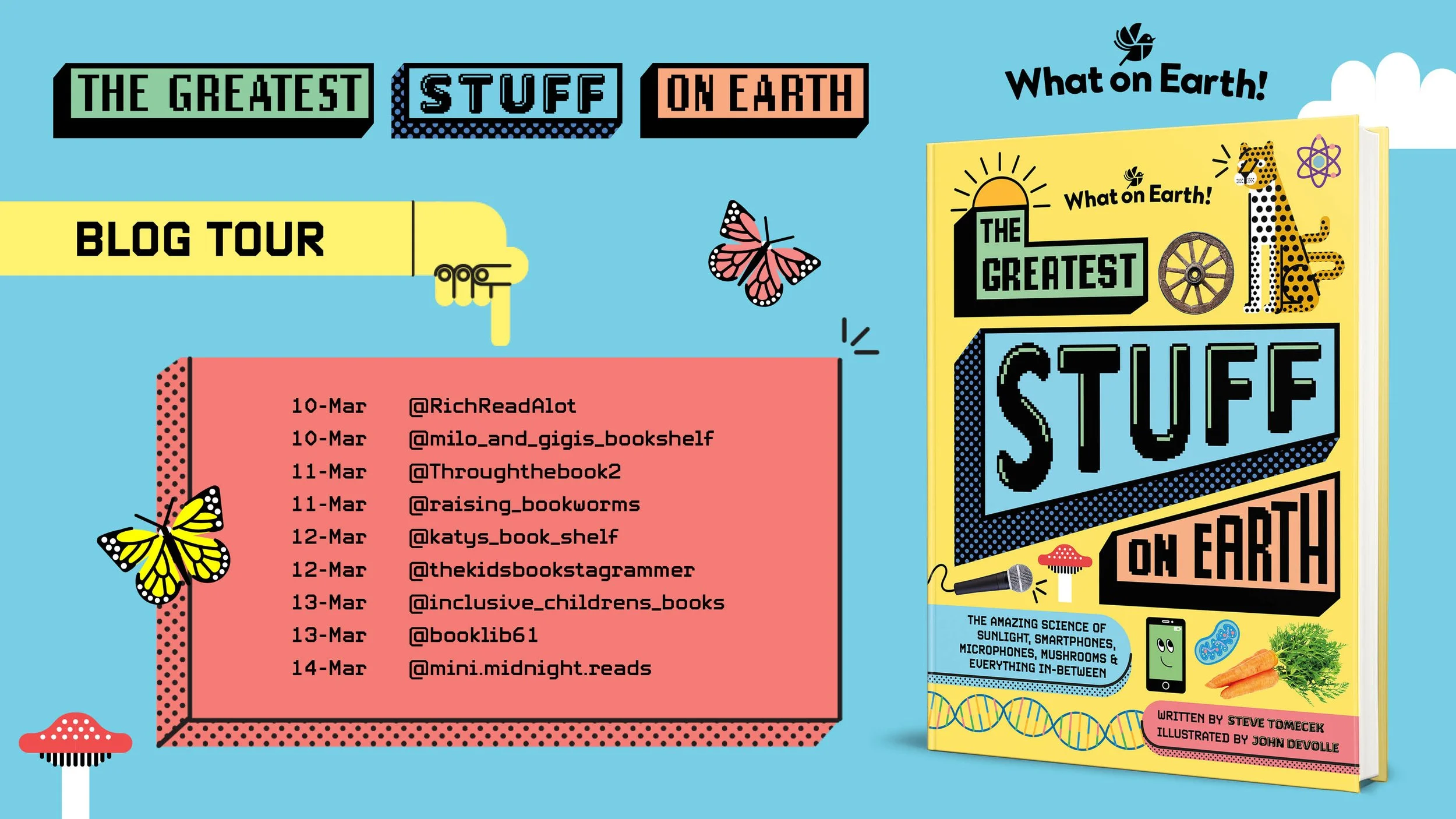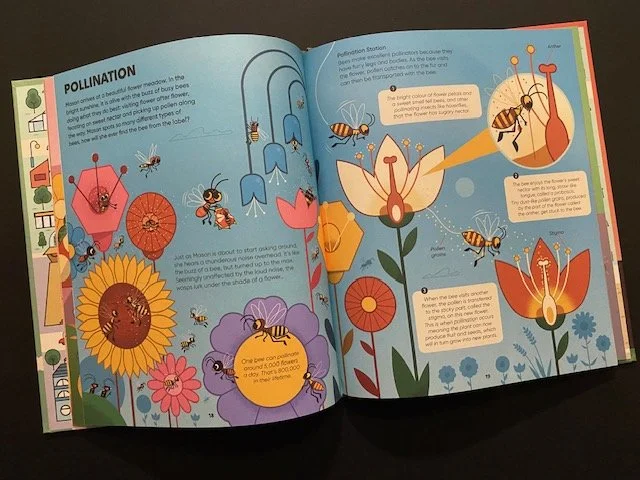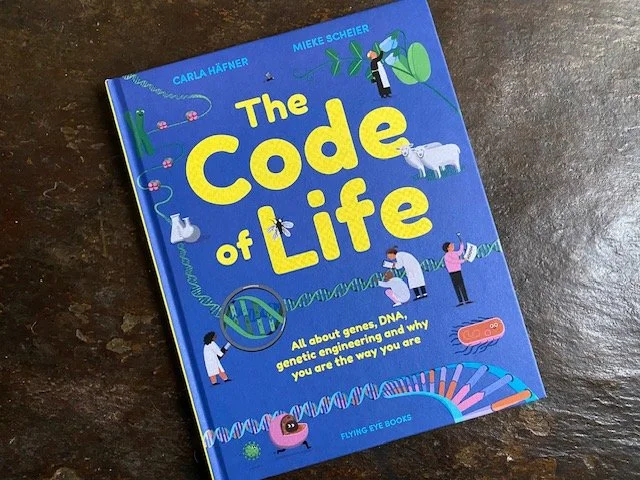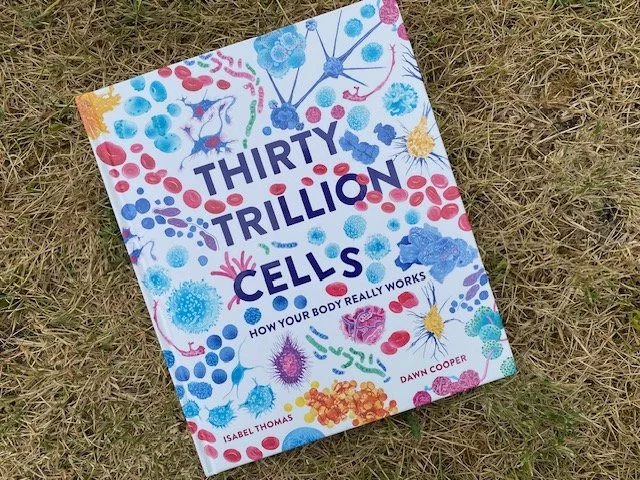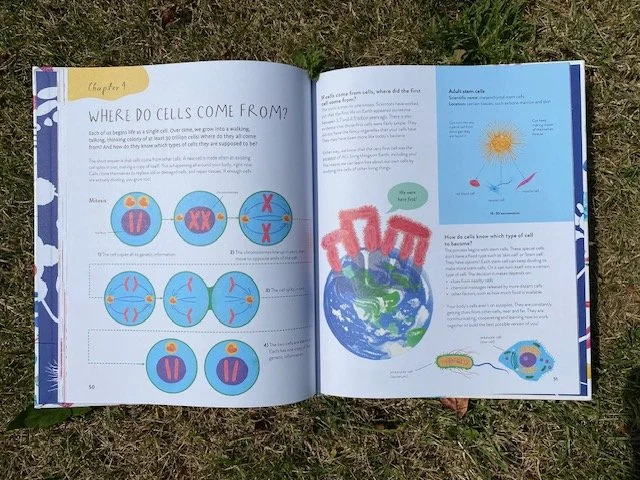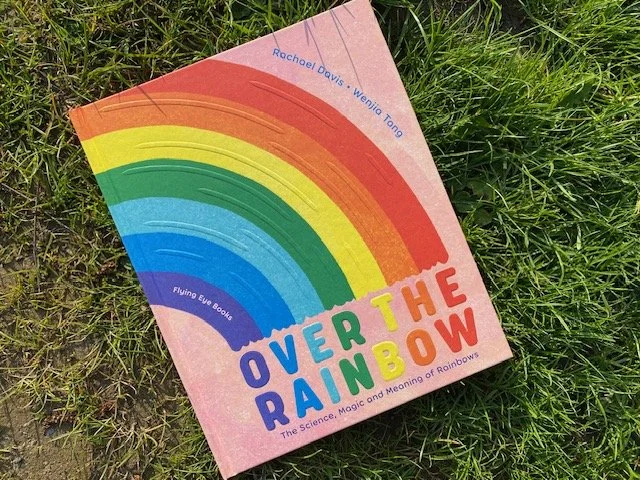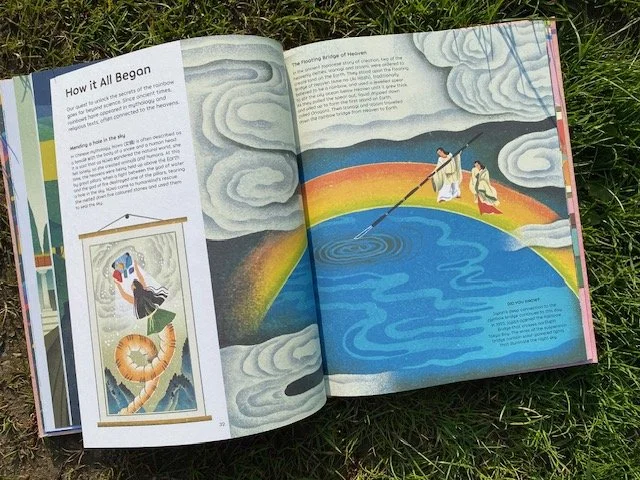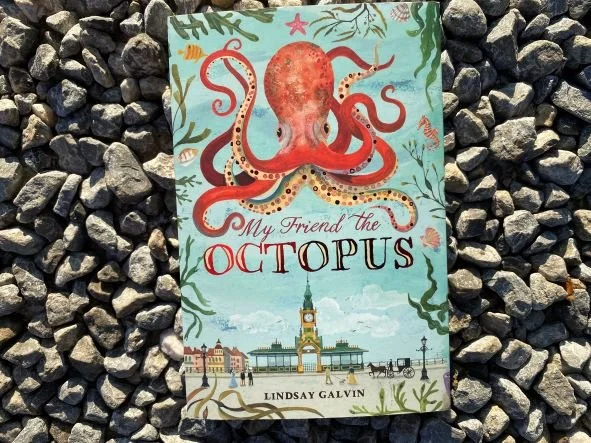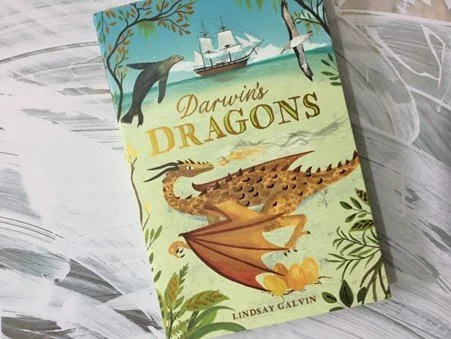
Reviews
There are so many incredible books available at the moment that it is impossible to read them all, no matter how hard I try! Here are my thoughts about some of the books I have read and how I think they could be used in school as well as Q and A sessions with authors and illustrators.
Blog Tour: The Greatest Stuff on Earth
Today it’s my turn on the Blog Tour for ‘The Greatest Stuff on Earth’, an amazing look at the science behind lots of stuff we take for granted!
‘The Greatest Stuff on Earth’ is packed full of fascinating…stuff! Offering a light-hearted look at everything from aeroplanes to x-rays, this brightly coloured book is perfect for dipping in and out of.
Divided into ‘Stuff: The Basics’, ‘Nature Stuff’ and ‘Stuff Humans Make and Use’, there is a huge amount of information contained in these pages, accompanied by plenty of photographs, illustrations and diagrams. The author has a chatty, quirky style which is sure to engage young readers whilst offering clear and simple explanations about some quite complex topics.
In addition to a contents, an index and a glossary, there is also a section about the research for the book and selected sources used. The author explains some of the pitfalls of using websites for research, how he selects which to use and how he cross-references to his findings to ensure he is sharing reliable information. In addition to all the fascinating facts in the main text of the book, this section would make an excellent starting point for discussions with children about checking sources and verifying information.
A really enjoyable read!
The Greatest Stuff On Earth
Steve Tomecek, illustrated by John Devolle
What on Earth! ISBN: 978-1804661413
Many thanks to Laura for inviting me to take part in this Blog Tour. Make sure you have a look at the other stops!
The Bee Connection
Meet Mason B. Chandler, owner of Stemville’s private detective agency. In her first case, Mason follows the clues to solve a sticky situation which has caused Bug Borough to come to a standstill. Not only does she reveal the truth about what happened, Mason introduces readers to the fascinating world of bees along the way.
Combining story, information and appealing illustrations, ‘The Bee Connection’ is an absolute must-have for any curious nature lover, class bookshelf or library. There is a feeling of Richard Scarry’s ‘Busy World’ to some spreads, drawing the reader into Mason’s world and encouraging them to linger over each spread, absorbing the details whilst other pictures really help to support and explain the text.
Following Mason on her investigation, readers are encouraged to notice details and develop their factual knowledge of the different varieties of bees and their lifestyles. So much information is given, but in such a readable, easily digested style, brilliantly supported by the illustrations, that there is never a feeling of being over-loaded or overwhelmed by facts. Paragraphs, labelled diagrams, captions and short snippets of text keep the reader interested and attentive.
The book concludes with practical suggestions for how to be ‘bee friendly’, encouraging readers to value and look after these incredible creatures. These would be simple to follow at home or in school and the book would make an invaluable resource for teachers, supporting the science curriculum, developing interest in STEM subjects and modelling information writing as well as perhaps inspiring children to draw and design their own bee characters who might live in Bug Borough!
Anyone familiar with the very excellent ‘Professor Astro-Cat’ series will have high expectations of this - and they will not be disappointed. Informative and entertaining, ‘The Bee Connection’ is an bee-rilliant read!
STEMville: The Bee Connection
Ben Newman
Flying Eye Books ISBN: 978-1838741266
Published February 1st 2024
You can read my reviews of Professor Astro-Cat’s ‘Human Body Odyssey’ here and ‘Deep Sea Voyage’ here.
The Code of Life
All About Genes, DNA, Genetic Engineering, and Why You Are the Way You Are
Completely fascinating, ‘The Code of Life’ had me absorbed from start to finish! This is not a subject I have any great knowledge of, or (if I am honest) any real interest in, and yet, I found myself actually understanding and enjoying learning about genetics and DNA. And that’s something I never thought would happen.
Starting with the work of Gregor Mendel, an Austrian monk, whose early experiments with pea plants led to his being known as ‘the father of genetics’, the book clearly explains the theory of genetics, what genes are and the importance of DNA- all in a manner which is easily understood and supported by examples, diagrams and illustrations. The work of different scientists and their discoveries is explored, but the book makes it clear that there is still so much more to learn, encouraging the reader to think about the possibility of solving future puzzles. Issues like cloning are also explored, with the example of Dolly the sheep used to consider the debate around this subject.
A fascinating read for anyone who is interested, ‘The Code of Life’ also supports the KS3 Genetics and evolution National Curriculum statements. Its clear explanations, the engaging style and tone of the writing and the plentiful illustrations which support the text make it an invaluable, accessible resource. There is even a page encouraging readers to conduct their own research, offering ideas for things to try- and the answers are also included!
The Code of Life: All About Genes, DNA, Genetic Engineering,
and Why You Are the Way You Are
Carla Häfner, illustrated by Mieke Scheier
Flying Eye Books ISBN: 978-1838741785
Thirty Trillion Cells
When it comes to answering the questions children love to ask, Isabel Thomas is the person with the answers! In this amazing book, she takes complex scientific concepts and presents them in an amusing, lively way which is accessible to all.
One of the things I love best about teaching is that you are constantly learning- not only in an effort to keep up with the constantly shifting curriculum, but because children are such wonderfully inquisitive beings who pose fabulous questions about everything and anything. And books like this are an essential ingredient in satisfying their insatiable curiosity! For the teacher without a science background, ‘Thirty Trillion Cells’ is an absolute God-send in helping them understand some of the concepts they are expected to teach!
As one example, in Y6 children are expected to be able to identify and name the main parts of the human circulatory system, and describe the functions of the heart, blood vessels and blood. A double spread about blood cells clearly explains what blood does and explores the different types of cells it contains. Side headings and labelled diagrams are used to support the text, making it easily understood. This could easily be used for guided reading sessions to support learning across the curriculum or as part of the body of a science lesson.
Scientific terms are used throughout the book, but these are also explained in very down to earth, child-friendly ways! The ciliated epithelial cells (hairy lining cells to you and me) in the tubes leading to your lungs form part of a ‘snot elevator’, ridding the respiratory system of all the tiny particles of pollution taken in with air. This is very easy- and yucky- to visualise, understand and remember! A glossary and comprehensive index make the book useful for locating specific information if used for research, but the book is perfect for browsing. There is so much to discover in these pages- learning without realising!
‘Thirty Trillion Cells’ is a brilliant read, combining informative and attractive illustrations with fascinating, clearly explained text.
Thirty Trillion Cells
Isabel Thomas, illustrated by Dawn Cooper
Welbeck Publishing ISBN: 978-1803380131
You can read my review of ‘Moth’ here.
Over the Rainbow
Everyone loves seeing a rainbow, arcing through the sky, and this lovely book encapsulates all the magic and joy of this sight, from the science behind it to the symbolism connected with it! Organised into five sections-The Science of Rainbows, Rare Rainbows, Rainbow Myths and Legends, Rainbows in the Arts and The Symbol of the Rainbow- a broad spectrum of information is covered with a clear contents, a glossary of terms and index to help the reader easily locate and understand everything included.
The book begins by offering ‘a close look at light’, using this as the basis to explain how rainbows are formed. Diagrams help to support the text and illustrate the facts as each idea is developed. Early thinkers from across the world are included, showing how human understanding of rainbows progressed and advanced to Newton’s experiments with prisms in 1666. Unusual rainbow formations are introduced and explained as well, making fascinating reading!
My favourite section is that which looks at the myths and legends connected with rainbows. Beautiful illustrations by Wenjia Tang capture moments from these stories whilst additional snippets of information are scattered throughout. The chapter devoted to the arts is also very interesting; however, it is a shame no poetry has been referenced! The book ends with how the rainbow has been used as a symbol in stories and society.
An excellent book for reading cover to cover, for browsing at leisure or for using as a tool for research, ‘Over the Rainbow’ would be a brilliant addition to any library or bookshelf!
Over the Rainbow: The Science, Magic and Meaning of Rainbows
Rachael Davis, illustrated by Wenjia Tang
Flying Eye Books ISBN: 978-1838740870
Scientists in the Wild: Galápagos
A team of scientists tasked with observing and protecting the islands’ wildlife set sail for the Galápagos Islands, a place like no other on Earth. This book follows their adventures as they work in the field, exploring all the wonders of this incredible archipelago.
Starting with a map and a brief introduction to the islands, the scene is set for the introduction of the seven scientists from around the world who form the team on board the research ship ‘Sula’. The role of each is clearly explained, showing the range of expertise needed for the expedition and introducing the reader to a wide range of skilled jobs. A cross section of the Sula (the scientific name for the blue-footed booby, one of the birds of the Galápagos) and labelled diagrams of the diving equipment to be used help the reader to understand how the team will conduct their studies.
A spread offering a ‘Guide to Galápagos Life explains why the islands are so unique and, sadly, how close to extinction many of the species which inhabit the archipelago are. A key for identifying their status is included and used throughout the book as different species are introduced. The islands are then explored through the eyes of the research team as they pursue their fascinating mission, climbing volcanoes and diving the depths of the seas to gather the data they need.
This is a fascinating, highly engaging book which will be a welcome addition to school libraries and bookshelves as well as being an excellent text for inspiring young adventurers at home. From the arrival of Darwin and his discoveries to food chains, from evolutions and inheritance to volcanoes, from conservation to island habitats, there are so many ways in which this book would add to the primary curriculum. A glossary, contents and index help the reader navigate the text for research and each spread is beautifully illustrated, adding much to the reader’s enjoyment of the text.
Scientists in the Wild: Galápagos
Helen Scales, illustrated by Rômolo D'Hipólito
Flying Eye Books ISBN: 978-1838740931
Published on the 2nd March 2023
My Friend the Octopus
When her mother, a successful milliner, suddenly whisks Vinnie away from everything she knows in London to live in Brighton with her Aunt Bets, her world is turned upside down. The two have never been separated yet now her mother has travelled to Paris on business, leaving Vinnie to a very different life with far more freedom and many new experiences. Vinnie is particularly drawn to the aquarium where she is enchanted by the newest acquisition, a ‘rare gargantuan devil-fish’- a giant octopus. Through observation and patience, Vinnie gradually comes to know this creature, using her sketching skills to capture her unusual friend.
‘My Friend the Octopus’ is a fabulous, many layered story which is full of colour and historical detail. Set in Victorian times, the novel offers much to enjoy, both as a read aloud and as a key text to inspire work from a class, including the attitude of ‘collectors’ and animal well being, working conditions, the role of women and racism.
The aquarium shows the stark contrast between those who care for animals and are keen to learn about them and consider their well being and those who see them as possessions or as a way of making money. Along with Vinnie, Mr Lee, the aquarist in charge of the animals, and his nephew, Charlie, show patience and curiosity, a willingness to learn about the octopus whilst caring for it. For Captain Bickerstaff, the octopus is a ‘slippery beast’, a way to generate income for the aquarium. There is so much to discuss and explore here, considering how attitudes have (or have not) changed and no doubt inspiring a fascination for these amazing creatures to equal Vinnie’s.
Child labour during Victorian times is something children are regularly taught about, but which often focuses on chimney sweeps or factory workers. By introducing the girls caught in the fashion trade, Lindsay Galvin exposes the cruel conditions endured and the consequences of fulfilling the caprices for a certain style or trend. Parallels can be drawn with today’s ‘fast fashion’ and the exploitation of cheap labour to meet this demand.
The book is rich in historical details which make it a delight to read. The risqué nature of bathing and riding a bicycle show how women like Aunt Bets are enjoying new freedoms, but the story also exposes the frustrations of the rigid expectations for women at this time. Notes from the author at the end of the book allow the reader to learn more about some elements of the story and there is a recipe for ‘Petits Fours à thé’ which I have every intention of making when I have a moment!
At the heart of the story is Vinnie, who blossoms into believing in herself under the care and nurture of Aunt Bets who constantly encourages her to ‘get doing’- a positive message for all of us. Her friendships with Charlie and Temitayo are beautifully developed and each character has a fully developed personality and ‘story’ of their own. The ‘baddy’ is truly sinister- no one would want to meet him anywhere- making the twists of the plot full of tension.
I really enjoyed ‘Darwin’s Dragons’ (and ‘The Secret Deep’), but in ‘My Friend the Octopus’, Lindsay Galvin has written an absolute treasure! The cover is beautifully illustrated with fold out flaps to explore, making an enticing start to an excellent book.
My Friend the Octopus Lindsay Galvin
Chicken House ISBN: 978-1913696405
You can read my review of ‘Darwin’s Dragons’ here and ‘The Secret Deep’ here.
